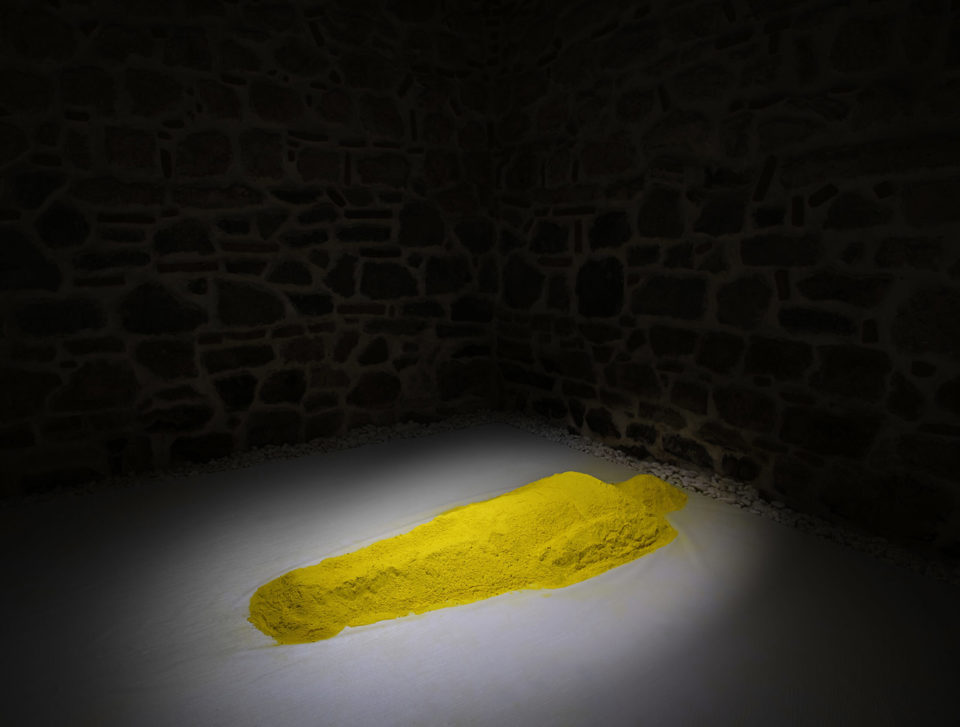Inspired by Aşıklı Höyük, a neolithic burial mound (8200 BC–7400 BC), located circa 25 km southeast of Aksaray, Turkey, where prehistoric people constructed an artificial hill of earth and stones to build over the remains of the dead. This memorial was designed as a home for the deceased and to some degree resembled the dwellings of the living.
Arslan’s powder pigment installation, 'Dust to Substance', revisits the ritual of pigment creation and communal painting within a contemporary art context. Ancient pigments were made from minerals and rock and a variety of tools and methods were used, such as shell and quartzite stone to grind charcoal and ochre. Thin bones from the front leg of a wolf were dipped in ochre and applied on the cave walls, depicting human figures, wild animals, and signs.
Arslan collaborated with archaeologists and researched this ancient burial site in her native Turkey. Her pigment piece examines the cyclic nature of objects and the evolution of materials. The concept of ‘object dragging’ is central to her piece, symbolising the transformation and movement of matter. The primary form, created with yellow powdered pigments, transforms through audience interaction and airflow, suggesting the shift from human form to topography. This dynamic interplay underscores the continuous cycle of matter and the evolving human-environment relationship, bridging age-old rituals with contemporary art and the ever-shifting landscape of modern existence and social meaning.
Image: Özgül Arslan, From Dust to Substance, 2021 - 2022, powder pigment installation, dimensions variable.
Courtesy and ©Özgül Arslan and Renée Pfister Art & Gallery Consultancy, 2024.
#özgülarslan #archaeology #burialmound #dusttosubstance #neolithic #dwellings #ritual #pigments #powerofart #installation #reneepfisterartandgalleryconsultancy
